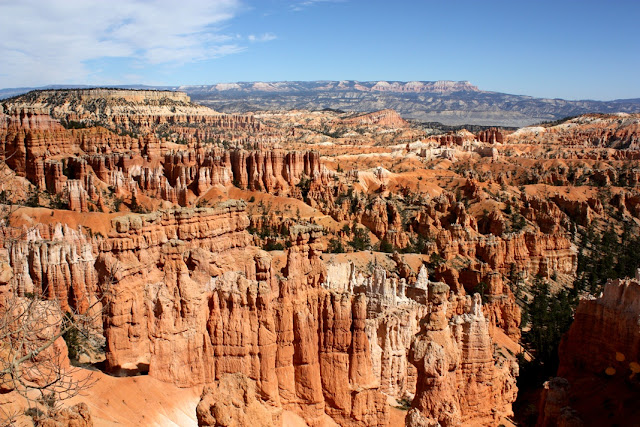Our last stops on our tour of the volcanic features of the Cascades were Crater Lake and Lassen Volcanic National Parks.
After the last eruption of Mt. Mazama, about 7,700 years ago, the empty magma chamber collapsed, leaving behind a 2,200 ft deep caldera which was filled with rain water over the following several hundred years. Since the lake has no drain, its level is determined by the balance of precipitation and evaporation which currently results in a maximum depth of 1,950 ft., making it the deepest lake in the US.
Due to the absence of inflows, the water is extremely clear - the underwater visibility is about 100 ft. An even more spectacular consequence is the incredibly deep blue color of the lake - impossible to fully demonstrate in a photo, but here are a few attempts:
 |
| Crater Lake - the colors are not edited! |
We stayed at a National Forest campground located at Lake Diamond, 1/2 hour north of Crater Lake. Wunderful nature, lots of privacy between the campsites, perfect for letting go and unwinding. The tradeoff - no hookups, no cell phone, no internet - is a no-brainer!
 |
| Our campsite at Lake Diamond |
After an easy-to-forget two-night stop at a KOA campground in Klamath Falls, Oregon, we stopped at a very remarkable private RV park north of Lassen Volcanic National Park. The campground was located right in the middle of a ranch, where we were surrounded by countless cattle:
 |
| Nice, shady campsites with lots of space |
The funny thing was that the cows were mooing incessantly when we arrived, not just a few, but dozens of them at the same time. Being the self-appointed cow specialist, I predicted that the mooing would stop by nightfall since "cows sleep at night and don't moo". My fall from grace could not be harder, because those cows would barely notice the night and the mooing concert went on throughout the whole night without any change.
 |
| All 4 sides of the campground looked like that |
The next day, while on a hike in Lassen Volcanic NP, we happened to meet the owner of a ranch in Oregon, and he explained that we had happened to arrive the day when the calves had been separated from their mothers, which happens at every cattle ranch once each fall. And because they, understandably, don't enjoy being separated, moms and calves moo like crazy for two days, and then they forget their grief and stop mooing. Interesting lesson learned!
Lassen Volcanic NP is a worthwile stop not only because of a beautiful scenery, but also because it features the largest hydrothermal activities in North America outside Yellowstone.
This valley with lots of fumaroles, hot pots, steam vents etc. is located at the end of a 30-min trail and is named "Bumpass Hell". No idea why!























































